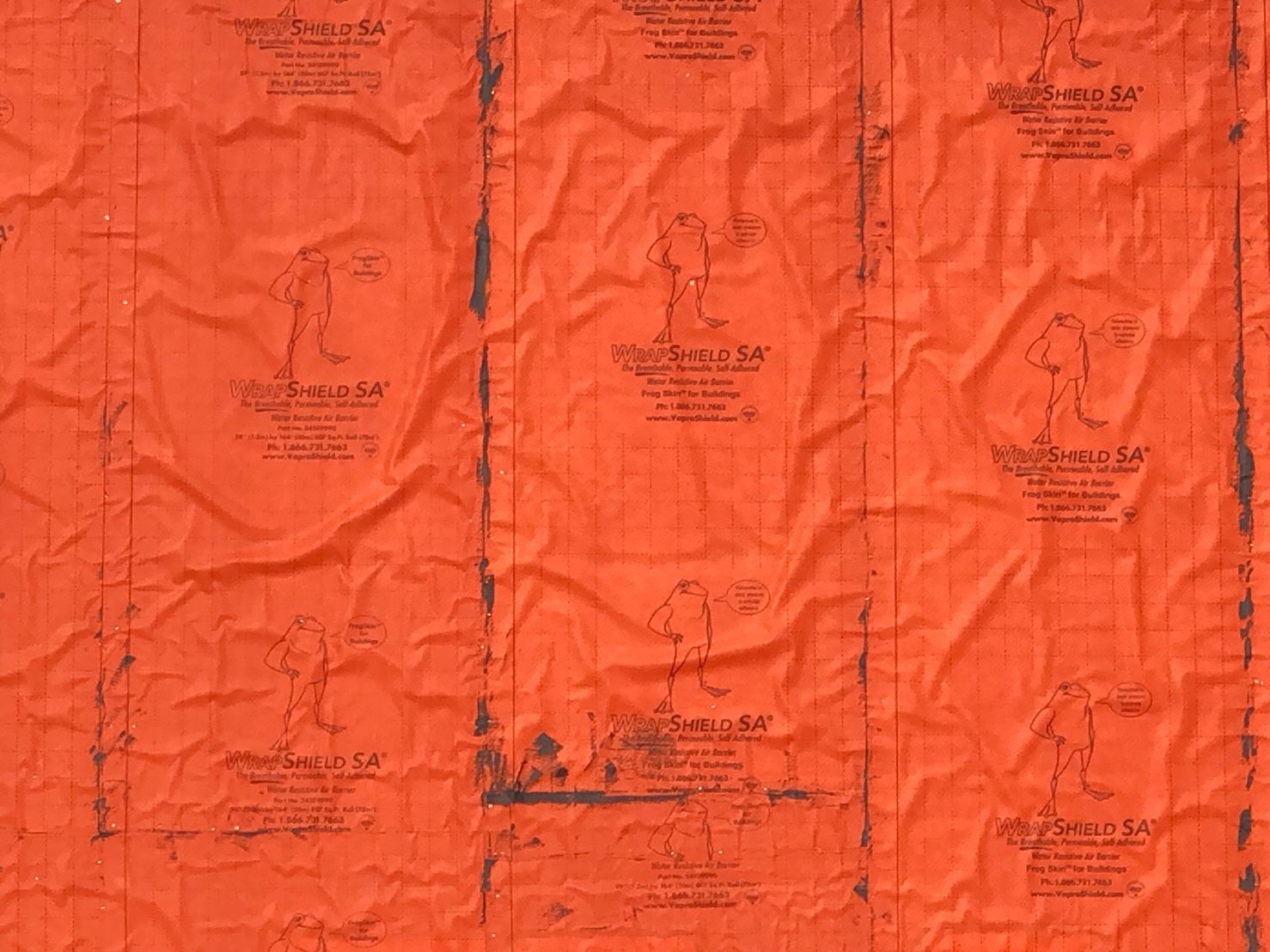Tags: #airtightness #buildingdesign #buildingenclosures #buildingenvelopes #fasteners #waterresistance




No harm, no foul? When an adhered AWB becomes unadhered, is it relegated to a mechanically-attached system?
One of the benefits of an adhered AWB is its ability to address 3D continuity in the Z-plane. When the AWB is tightly adhered to the substrate, air tightness and fastener sealability can be improved. The reasoning – there is no interstitial space between the barrier and substrate through which air and water can migrate. An unadhered membrane loses this advantage. Even worse, poor adhesion may cause the system to fail at laps and other critical interfaces.
In this application, the ‘self-adhered’ membrane is held together by adhesive, fasteners, and liquid flashing. The membrane has failed to stick even to itself. As a result, it is discontinuous at laps and unsealed terminations. It will not serve as a barrier to air and water.